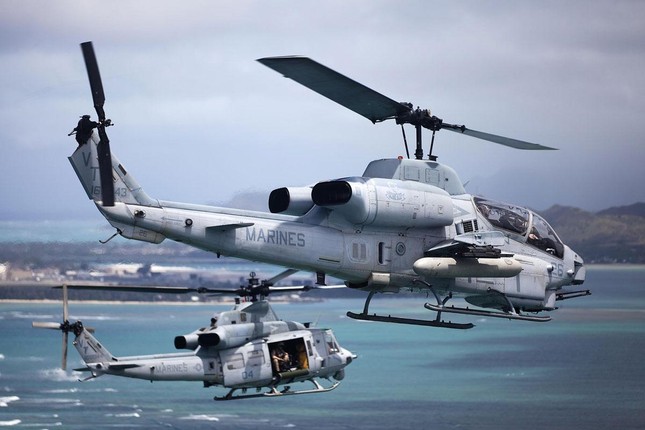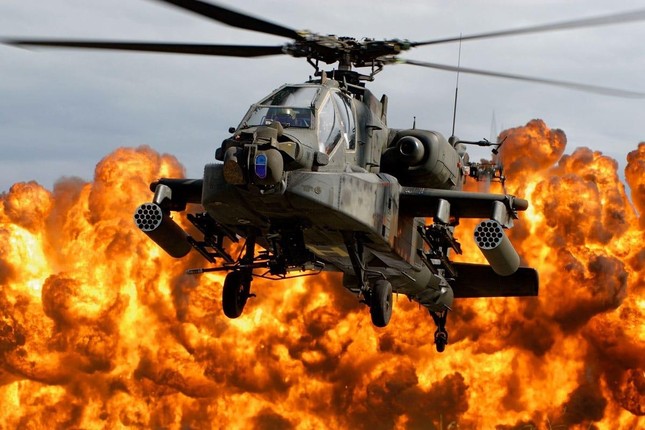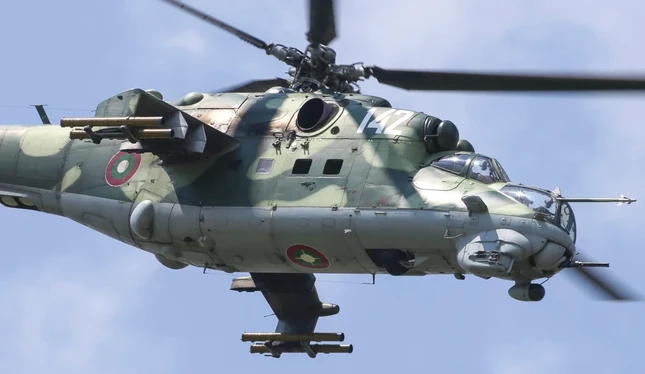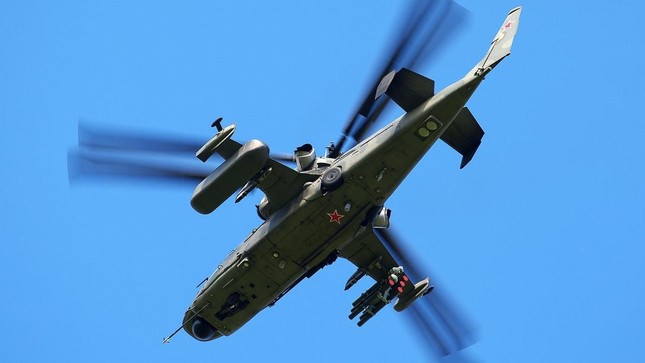 |
AH-64 Apache
Originally built by Hughes Helicopters and now manufactured by Boeing, the Apache series made its first flight in September 1975 but only actually entered service with the US Army in April 1986.
The AH-64 Apache officially participated in Operation Just Cause in Panama in December 1989. However, it was during Operation Desert Storm in 1991 that Apache really made a name for itself. The AH-64 fired the first shots of the operation, knocking out two important early warning radar facilities in western Iraq and thus clearing the corridor for US Air Force jets on their bombing routes. Baghdad. From there, Apache squadrons continued to destroy more than 500 Iraqi main battle tanks.
The Apache is an attack helicopter with a crew of two. It has a nose-mounted sensor for target acquisition and a night vision system.
The AH-64 is equipped with a 30mm M230 cannon, 4 pylons to carry weapons, typically a mixture of Hydra-70 and CRV7 70mm air-to-ground missiles, AGM-114 Hellfire and AIM-92 Stinger missiles.
 |
| AH-64 Apache helicopter. Photo: Creative Commons. |
AH-1W Whiskey Cobra
Although the US Marine Corps retired the AH-1W Super Cobra, or “Whisky Cobra”, in October 2020, this helicopter line has had a turbulent operational history. The first iterations of the Cobra helicopter saw action in the Vietnam War from 1969 to 1972, as well as in operations Urgent Fury and Praying Mantis. During Operation Desert Storm, the AH-1W destroyed 97 Iraqi tanks and 104 armored vehicles.
The AH-1 Cobra helicopter can be armed with a 20 mm gun, TOW and Hellfire anti-tank missiles, 70 and 127 mm rockets, as well as Sidewinder air-to-air missiles.
 |
| AH-1W Whiskey Cobra helicopter. Photo: US Marine Corps. |
Mi-24 Hind
The first Mi-24s were used by the Soviet Union in the late 1970s, starting as a military transport, but reconfigured as a fighter starting with the Hind-D variant. It was the Mi-24 Hind-D that played an important role in the Soviet war in Afghanistan from 1979 to 1989, motivating the US Central Intelligence Agency (CIA) to provide Stinger missiles to Afghan rebels. This same means also helped Iraqi President Saddam Hussein quickly defeat a Shiite uprising in southern Iraq in March 1991.
To date, the Mi-24 Hind has participated in more than 40 wars and has been deployed by more than 40 countries. Depending on the variant, the Mi-24 can be equipped with a Yak-B 12.7 mm four-barrel machine gun with a rate of fire of 4,000-4,500 rounds per minute, with a built-in 30mm or 23mm fixed gun mount. The Mi-24P and Mi-24V variants have four underwing pylons for up to 12 anti-tank missiles such as the Shturm.
 |
| Mi-24 helicopter. Photo: Creative Commons. |
Ka-52 Alligator
Mr. Logan Nye, former US Army journalist and former paratrooper of the 82nd Airborne Division, rated the Russian Ka-52 Alligator as the best attack helicopter in the world. He commented: “The Ka-52 is capable of operating at high altitudes and speeds. Alligator’s anti-ship missiles have a better range than the AH-64 Apache, while having comparable armor and air-to-surface capabilities.” Similar to an Apache helicopter.
In fact, the Ka-52 helicopter has been used regularly in Russia’s special military operation in Ukraine.
 |
| Ka-52 Alligator helicopter. Photo: Russian Air Force. |
Mi-28 Havoc
Inheriting the Mi-24 Hind, the Mi-28 helicopter made its first flight in 1982 but was not commissioned by Russia until 2009. According to Mr. Logan Nye, this is the third best attack helicopter in the world. . The Mi-24 Havoc carries anti-tank missiles that can penetrate one meter of armor. It also has compartments for 80mm unguided rockets, five 122mm rocket tubes, 23mm and 30mm cannons, 12.7mm or 7.62mm machine guns as well as several types of bombs.
Havoc first appeared in combat during Russia’s campaigns in Syria, especially in the campaign against the terrorist organization IS in the battle for Palmyra, and has also been used extensively in Ukraine. Previously, the Iraqi Air Force put the Mi-28 into effective use for its own anti-IS campaigns in the Battle of Ramadi in 2015.
 |
| Mi-28 Havoc helicopter. Photo: Rosoboronexport. |





